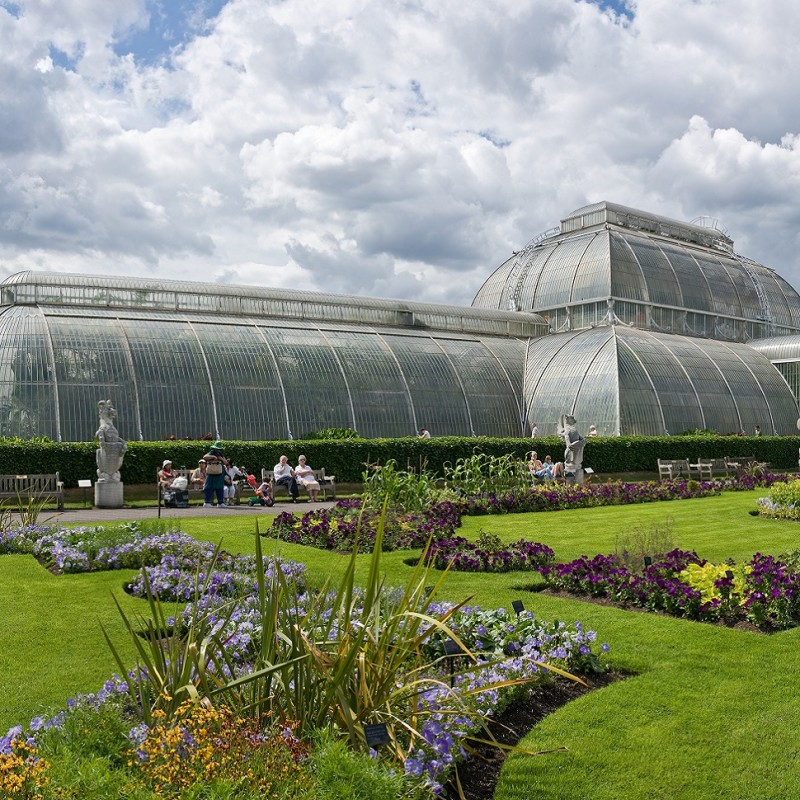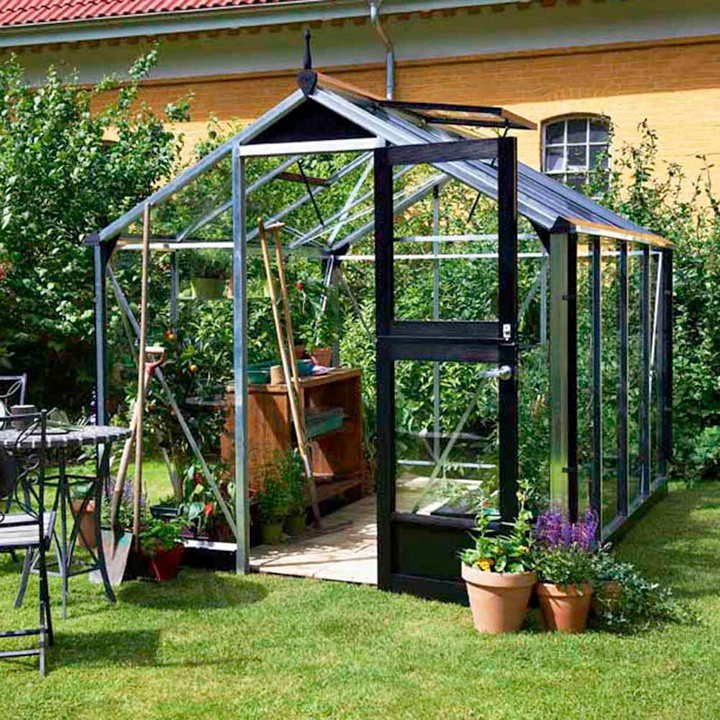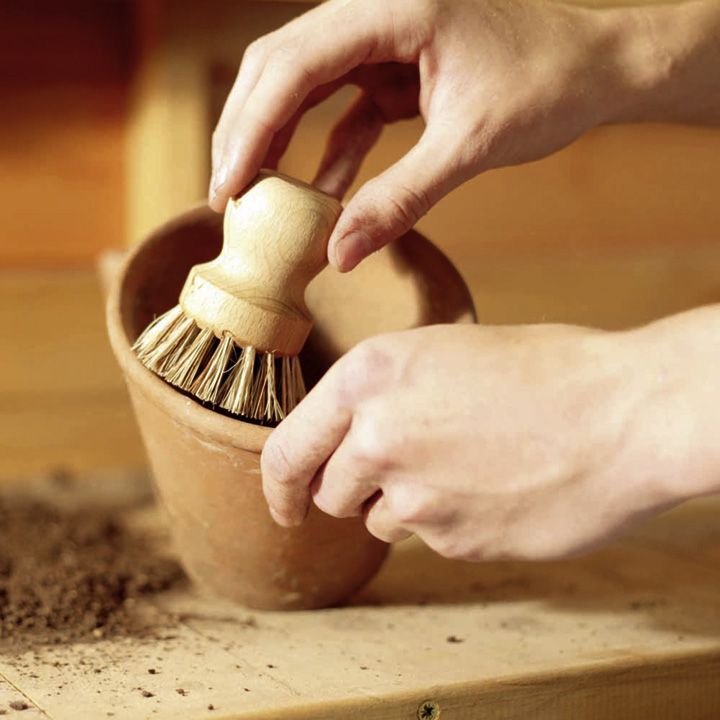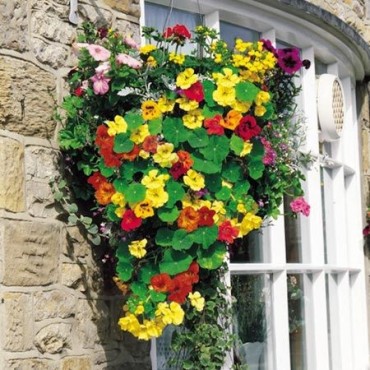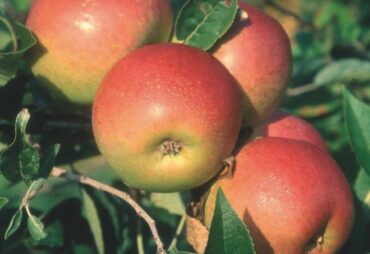Greenhouses can be traced as far back as 35AD when Roman Emperor Tiberius had a glass house constructed specifically for growing supposedly medicinal cucumbers. Over the centuries these glass structures continued to develop and by the 16th century enormous orangeries and pineries were protecting orange and pineapple trees in winter, whilst also advertising and confirming the wealth and status of their owners.
In Victorian times glass became cheaper and more readily available. This resulted in greenhouses became popular as a means of housing exotic unusual plants such as orchids and palms. The best example perhaps being the magnificent Palm House at Kew Gardens. With 16,000 panes of glass and an immense central dome Kew’s Palm House is considered to be the world’s best example of a Victorian iron and glass construction.
Modern Greenhouses
By the middle of the 20th Century, the first mass produced greenhouses became available made not only in traditional wood but also galvanised metal and aluminium. Today, greenhouses are a relatively common site and come in a wide range of shapes, sizes, materials and colours.
Buying a greenhouse
Suttons offer a range of quality greenhouses in different sizes and different materials. Before choosing your new greenhouse we suggest you give some consideration to the following:
Site
Your greenhouse will need to be in an open sunny position but sheltered from any strong winds and preferably not to close to any trees. If you want to be able to heat the greenhouse then ensure it is close to an electricity supply.
Size and Shape
The size will be determined by the available space and budget but do opt for the largest you can as you’ll always be able to fill it! Greenhouses are now available in all sorts of shapes including domes although the traditional rectangle is still the most popular and with its high roof allows for good light transmission.
Construction
The choice of material for the frame depends on both personal taste and budget. Wood is the traditional choice and arguably the most attractive but is expensive and needs regular maintenance. Aluminium frames are cheaper, require no maintenance and can be colour coated.
For glazing glass is definitely the best option with toughened glass on the door as a minimum. Other glazing materials may be cheaper but they will not let in as much light as glass and will degrade through time.
Even a small greenhouse needs ventilation and roof vents are the most simple and the most effective.
Browse the Suttons range of greenhouses
Maintaining an existing greenhouse
At least once a year allocate some time to giving the greenhouse a good clean, both inside and out. This will ensure that it is working to maximum efficiency and will prevent the build-up of pests and diseases. Choose a mild day in early spring or in autumn, when the greenhouse is probably least full.
Inside:
- Remove everything that is not being used including empty pots, seed trays, support canes, etc.
- Get rid of any dead or dying plants
- Weed any soil borders
- Remove any dead, damaged or diseased leaves from surviving plants
- Clean and disinfect staging, pathways and any brickwork
- Clean the inside of the glass
- Check that any automatic vents are working correctly
Outside:
- Using a soft brush and hose give the glass a good clean removing any algae and debris
- Check for any broken panes of glass and replace as necessary
- Apply a preservative to wooden frames
Browse the Suttons range of greenhouse accessories.
Image: By Diliff (Own work) [CC BY-SA 3.0 or GFDL], via Wikimedia Commons
Last Updated on March 15, 2023 by Suttons Horticultural Team

